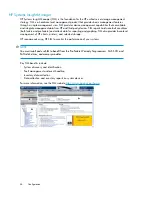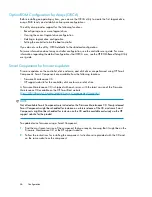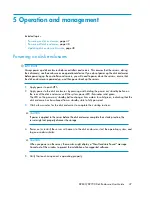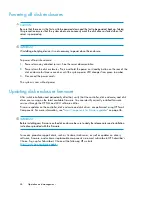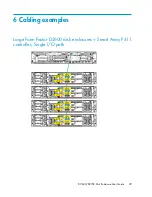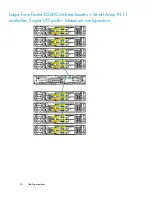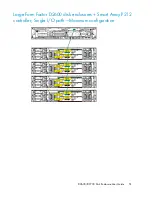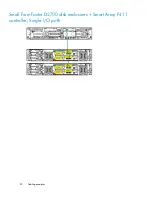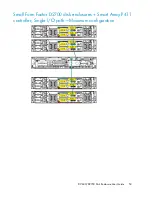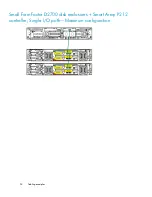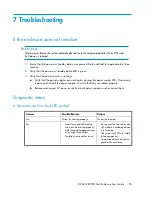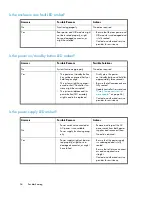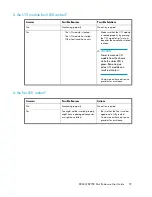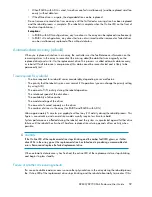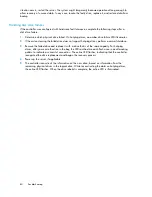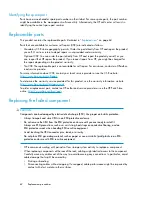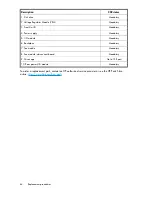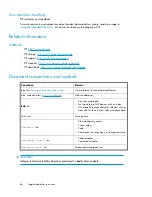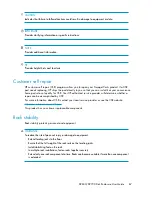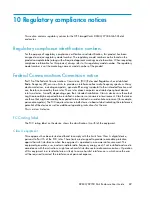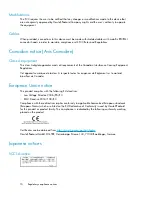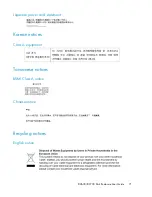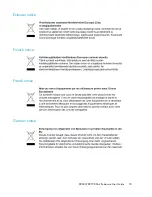
Recognizing disk drive failure
In an HP enclosure, a steadily glowing fault LED indicates that a disk drive has failed. Other indications
of failed disk drives are as follows:
•
ACU represents failed drives with a distinctive icon.
•
HP SIM can detect failed drives remotely across a network. (For more information about HP SIM,
see the documentation on the Management CD.)
•
ADU lists all failed drives.
•
Operating System log files
For additional information about diagnosing disk drive problems, see the HP ProLiant Servers
Troubleshooting Guide.
Effects of a disk drive failure
When a disk drive fails, all logical drives that are in the same array are affected. Each logical drive
in an array might be using a different fault-tolerance method, so each logical drive can be affected
differently.
•
RAID0 configurations cannot tolerate drive failure. If any physical drive in the array fails, all non-
fault-tolerant (RAID0) logical drives in the same array also fail.
•
RAID1+0 configurations can tolerate multiple drive failures as long as no failed drives are mirrored
to one another (with no spares assigned).
•
RAID5 configurations can tolerate one drive failure (with no spares assigned).
•
RAID6 with ADG configurations can tolerate simultaneous failure of two drives (with no spares
assigned).
Compromised fault tolerance
If more disk drives fail than the fault-tolerance method allows, fault tolerance is compromised, and
the logical drive fails.
Factors to consider before replacing disk drives
Before replacing a degraded drive:
•
Open HP SIM and inspect the Error Counter window for each physical drive in the same array to
confirm that no other drives have any errors. For details, see the HP SIM documentation on the
Management CD.
•
Be sure that the array has a current, valid backup.
•
Use replacement drives that have a capacity at least as great as that of the smallest drive in the
array. The controller immediately fails drives that have insufficient capacity.
To minimize the likelihood of fatal system errors, take these precautions when removing failed drives:
•
Do not remove a degraded drive if any other drive in the array is offline (the online LED is off). In
this situation, no other drive in the array can be removed without data loss.
•
Exceptions:
• When RAID1+0 is used, drives are mirrored in pairs. Several drives can be in a failed condition
simultaneously (and they can all be replaced simultaneously) without data loss, as long as no
two failed drives belong to the same mirrored pair.
Troubleshooting
58
Summary of Contents for StorageWorks D2700
Page 10: ...Hardware 10 ...
Page 22: ...Technical specifications 22 ...
Page 32: ...Installation 32 ...
Page 68: ...Support and other resources 68 ...
Page 72: ...Bulgarian notice Czech notice Danish notice Dutch notice Regulatory compliance notices 72 ...
Page 74: ...Greek notice Hungarian notice Italian notice Latvian notice Regulatory compliance notices 74 ...
Page 80: ...80 ...

